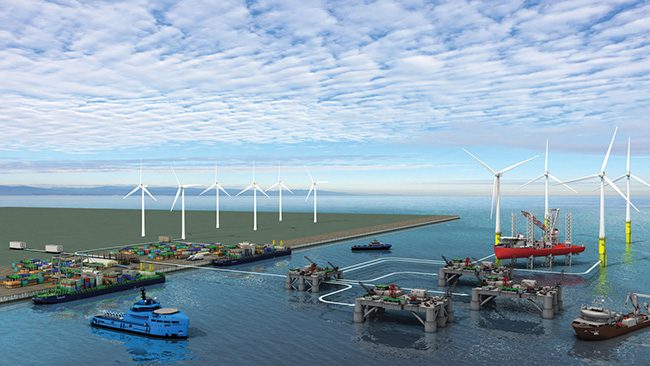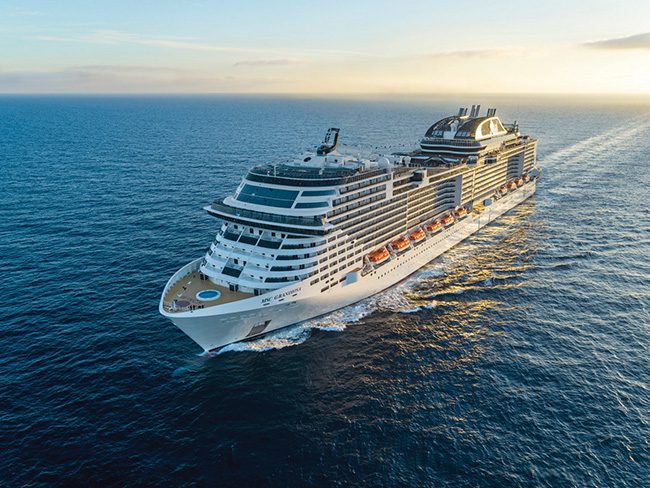Not Your Mother’s Microgrid
Utilities around the world will embark over the next decade on grid modernization at a monumental scale. With grid resilience and reliability top of mind combined with ambitious decarbonization goals, smart microgrids will undoubtedly be part of the plan.
A microgrid is a local, self-sufficient energy system that serves its own network. In a microgrid, a group of interconnected distributed energy resources (DERs) can operate both independently of the grid or as part of it—a self-sufficient island of energy amid a larger grid ocean. Hospitals, military bases, airports, and other essential services have used microgrids for decades to combine and control a variety of energy sources as a way to lower energy costs and as insurance against power disruption.
Today’s microgrid is exponentially more sophisticated. New technologies enable us to integrate renewable energy as one of the DERs and manage the electrons to optimize the load down to the millisecond. Advanced microgrids can gather energy from multiple sources, including solar energy, battery storage, and hydrogen-enabled, gas-powered generators.
Within the industry, several trends are emerging around microgrids and power conversion:
- ■ In the U.S., municipalities and industrial customers are looking to microgrids to bolster grid resilience as well as opting for sophisticated digital solutions to optimize energy management. They want to minimize outages and restore power more quickly after adverse events, such as extreme weather, while also seeking ways to reduce energy costs through the integration of more locally generated energy from solar and wind, and renewable energy in general.
- ■ In Europe, commercial and industrial customers with land constraints are favoring turnkey solutions in hybrid configurations to incorporate both additional renewables and hydrogen-enabled gas turbines that can one day transition from natural gas to hydrogen generated with renewable power.
- ■ In Australia, Canada and Latin America, robot mine operators, under pressure to decarbonize, are seeking ways to transition away from diesel generators and add more renewables while also ensuring reliability with the retrofit or addition of future-proof hydrogen-enabled gas turbines.
- ■ Worldwide, modern microgrids are also proving to be a practical solution for bringing electricity to the 675 million people living in the world without access to the grid, with over 80% of them in Sub-Saharan Africa.
The common thread among these trends is the desire to leverage microgrids as a way to accelerate decarbonization while also ensuring reliability and managing energy costs. Customers require individualized solutions that can meet them where they are in their decarbonization journey. They want options that are scalable, flexible, and reliable.
Decarbonizing Ports and Power Grids
Some of the most ambitious, forward-looking customers are asking how they can create a renewable-producing microgrid island that can tap the grid only when locally generated renewables aren’t available. In essence, the microgrid itself becomes a DER. GE Vernova’s GridNode automates the microgrid so that it knows when to use the self-generated renewable energy before it taps into the main grid and enables the microgrid to be dispatchable similar to grid connected DERs. By aggregating several of these islands or microgrid DERs, we create a virtual power plant.
For example, technology can allow the integration of the energy stored in electric vehicles into the grid, leveraging bidirectional charging to improve energy distribution. The International Energy Agency (IEA) estimates that 130 million electric vehicles will be on the road by 2030. Trucks and buses with larger batteries have the potential to support the grid, adding a new level of energy security and resilience, as an energy storage asset that can send power back to the grid.
 |
|
1. Electrification projects can help to substantially reduce carbon emissions in ports. Courtesy: GE Vernova |
Port and shipping operations also hold potential for microgrid-driven decarbonization. European port operations enable more than $2.1 trillion in international trade and create 1.5 million direct and indirect jobs, but this robust and essential trade comes at an environmental cost. Ships running their onboard power systems, often fueled by diesel, while berthed at European ports account for 8 million metric tons of carbon emissions. The shipping industry could reduce the carbon emission from berthed vessels in the European Union and Britain by 60% through the installation of shore power (Figure 1), according to a 2021 study by ETH Zurich’s Institute of Energy Technology.
At the busy port of Brest in France, the Defense Infrastructure Service Establishment (Brest ESID) installed a unique shore power system equipped with GE Vernova’s converters. The system delivers electric power to ships when they are in port, enabling them to turn off their engines. It reduced both carbon emissions and noise pollution. The system has dynamic power management capability, enabling conversion systems to be reconfigured automatically to meet the energy demands of different ships, sharing available power where and when it’s needed without interruption.
 |
|
2. The Cruise division of MSC Group joined a consortium with GE Vernova’s Power Conversion business, Lloyd’s Register, and Ceres Power Holdings to explore how to address the barriers to adoption of fuel cells in large ship applications. Courtesy: MSC Cruises |
On the shipping side, GE Vernova’s Power Conversion business worked with cruise operators (Figure 2) and large ship architects to integrate multi-megawatt solid oxide fuel cells (SOFC) into ships to provide electric power for ships, replacing the need for carbon-emitting diesel generators. The system has the potential to reduce CO 2 emissions by 47%, and reduce air and noise pollution when ships are in port. SOFCs are also flexible. They can burn gas today, but without changing infrastructure they can transition to hydrogen as it becomes available and meet their zero emissions target.
Reliable and Resilient Systems
In the U.S., energy security and resilience are driving microgrid adoption. The Portsmouth Naval Shipyard in Kittery, Maine, which overhauls, repairs, and modernizes the U.S. Navy’s nuclear-powered attack submarine fleet, sought out microgrid technology to ensure grid resiliency and reduce downtime during base-wide commercial grid outages.
GE Vernova’s microgrid control and energy management system integrated four substations and 50 feeders to manage peak loads of 18 MW. The microgrid control system is intelligent—it can select which loads to shed to ensure critical systems remain powered by available on-site generation. It also included a 1-MW battery energy storage system (BESS) to provide on-demand power capacity during transitions from grid power to island power. The system is expected to save the shipyard $6 million a year.
One of the most exciting areas for microgrids is also one of the most energy intensive. Data centers, ever more essential in our lives, can consume as much energy as a small city. They must operate reliably, uninterrupted 24 hours a day, seven days a week. Data industry analysts predict data centers will need to store 175 Zettabytes or 175 billion Terabytes of data by 2025. Decarbonizing this industry is essential if the world wants to meet its ambitious climate goals, but integrating intermittent and variable renewables, such as solar and wind power, is a challenge for an industry that cannot afford to lose power for even a millisecond.
GE Vernova’s aeroderivative gas turbine technology, derived from the well-proven GE aviation platform, and microgrid controls can meet that challenge. In a thermal hybrid system, thermal energy is reduced when renewable energy comes online. The microgrid controls monitor the various interconnected loads and DERs in real-time to maximize efficiency, reducing the amount of carbon-generating fuel consumed. That lowers both the costs and the carbon emissions.
Advanced Technology for the Evolving Energy Landscape
GE Vernova’s Energy Consulting team works with regional authorities and state leaders in the U.S. including the New York State Energy Research and Development Authority (NYSERDA) and the Massachusetts Clean Energy Center (MassCEC) to develop and promote the broader use of DERs and microgrids. The team has performed numerous techno-economic feasibility studies for various municipalities in the region in an effort to design best-in-class microgrids that bolster the resilience of critical local infrastructure while minimizing system costs to the customer and environmental impact. As the broader microgrid industry continues to grow within the U.S. and abroad, so too will the need to provide these carefully modeled, thoughtfully designed microgrid systems, capable of interracting with the larger power grid to provide grid support and/or firm capacity reserves, while still providing self-sufficient, reliable, clean power to a community in need at a moment’s notice.
As these examples demonstrate, advancing technology is allowing us to think about harnessing energy in dozens of combinations. Ultimately, the best end-to-end solutions demand expertise that can deliver flexible technology solutions. At GE Vernova, we’re thinking about energy from every angle. We have the energy to change the world.
—Olivier Jamart is executive director, Digital Solutions and Microgrids at GE Vernova’s Power Conversion business, and Mital Kanabar, PhD, PE is senior director of Innovation at GE Vernova’s Grid Solutions business. For more information on GE Vernova’s microgrid development efforts, please visit: www.gemicrogridsolutions.com.